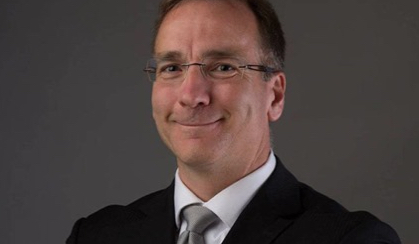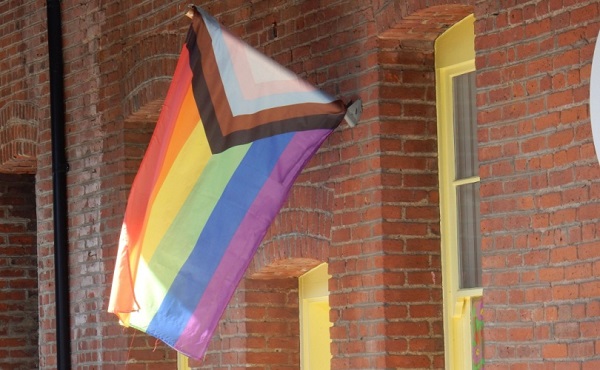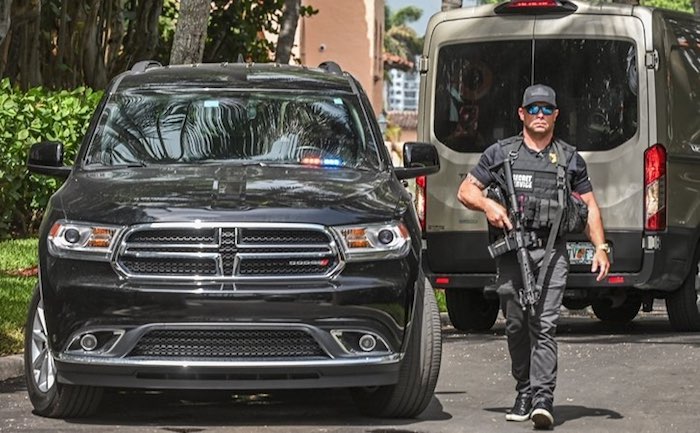Alberta
Red Deer South MLA challenging his own government to end restrictions for all family gatherings

Article submitted by Red Deer South MLA Jason Stephan
It’s time to let families get together again.
Families are the fundamental unit of our society. As we approach Family Day, we should consider what that means.
This week, I received and delivered written requests from 28 pastors and hundreds of members of their congregations to lift restrictions so families could celebrate Family Day together.
I agree. Our mental and emotional health requires in person love and kindness. Great healing can result simply from allowing immediate family members opportunities to serve and love each other in person, in ways they agree are appropriate for their family’s circumstances, nurturing their family’s resilience, their family’s individual and collective mental and emotional health.
When I was studying our constitution in law school, I learned that Section 2 of the Canadian Charter of Rights and Freedoms says that everyone has the “fundamental freedoms” of “association” and “peaceful assembly”.
The Supreme Court of Canada said that this freedom of association allows for the “achievement of individual potential through interpersonal relationships”.
What interpersonal relationship allows for more opportunities for “achievement of our potential”, individually or collectively, than in our families?
The freedom of peaceful – that is, not violent – assembly protects the “physical gathering of people”. What physical gatherings are more important than with our own families?
Belonging to, and gathering in, our families are not mere fundamental freedoms, they are also among the highest, most important, expressions of these freedoms.
This past Christmas we saw public health “measures” disallow immediate families – other than households – from gathering, both inside and then even outside. While families are now allowed to gather outside, with freezing winter temperatures, family gatherings continue to be starved. Many of our neighbors, and ourselves, have felt isolated and alone.
We also see families continue to be severely curtailed in gathering to console each other in funerals for loved ones with miserly, artificial limits on attendance, with frustrating contradictions, disregarding the size of spaces with much greater capacities to accommodate generous physical distancing for funeral services, equaling or exceeding those imposed at Walmart. This can result in pain.
The World Health Organization (WHO) defines health as “a state of complete physical, mental and social well-being and not merely the absence of disease or infirmity”.
The unfortunate irony is that public health measures can be unhealthy, resulting in familial disconnection, societal contention, and despair.
Government intrusions into our families’ fundamental freedoms can be very harmful. Under Section 1 of the Charter, government has the burden to justify imposing limits on these freedoms. In particular, government is required to demonstrate “proportionality” between its objectives and its limits imposed to achieve them – the cure cannot be worse than the disease.
This analysis also requires demonstration of a “rational connection” between the limit and the objective, and “minimal impairment” of no more than is necessary to accomplish the objective.
For example, while no child under 18 has died with/from COVID-19 in Alberta, many children – along with adults without serious health issues – are suffering profound economic, physical, social, mental and emotional health issues from health measures imposed upon them and their families.
If these individuals and families are at little or no risk from COVID-19, is there a rational connection to harmful health measures? Are there better opportunities for minimal impairment from less intrusive and harmful alternatives? It is healthier for our children, young adults and families to have hope for bright futures.
Government public health measures should – to the extent possible -leave families and their fundamental freedoms alone.
Societies and families are healthier and happier when they are free. A principled vision of hope is healthy, valuing freedom, requiring government to trust adults in positive ways, to govern themselves, allowing their families to carry on the activities of daily living in ways they individually deem fit appropriate to their own circumstances, in a good faith while respecting reasonable health measures and the rights of their neighbors to do the same.
Guest column from Jason Stephan, MLA for Red Deer-South
Alberta
Danielle Smith slams Skate Canada for stopping events in Alberta over ban on men in women’s sports

From LifeSiteNews
The Alberta premier has denounced Skate Canada as ‘disgraceful’ for refusing to host events in the province because of a ban on ‘transgender’ men in women’s sports.
Alberta Premier Danielle Smith has demanded an apology after Skate Canada refused to continue holding events in Alberta.
In a December 16 post on X, Smith denounced Skate Canada’s recent decision to stop holding competitions in Alberta due to a provincial law keeping gender-confused men from competing in women’s sports.
“Women and girls have the right to play competitive sports in a safe and fair environment against other biological females,” Smith declared. “This view is held by a vast majority of Albertans and Canadians. It is also common sense and common decency.”
Women and girls have the right to play competitive sports in a safe and fair environment against other biological females.
This view is held by a vast majority of Albertans and Canadians. It is also common sense and common decency.
Skate Canada‘s refusal to hold events in… pic.twitter.com/n4vbkTx6B0
— Danielle Smith (@ABDanielleSmith) December 16, 2025
“Skate Canada‘s refusal to hold events in Alberta because we choose to protect women and girls in sport is disgraceful,” she declared.
“We expect they will apologize and adjust their policies once they realize they are not only compromising the fairness and safety of their athletes, but are also offside with the international community, including the International Olympic Committee, which is moving in the same direction as Alberta,” Smith continued.
Earlier this week, Skate Canada announced their decision in a statement to CBC News, saying, “Following a careful assessment of Alberta’s Fairness and Safety in Sport Act, Skate Canada has determined that we are unable to host events in the province while maintaining our national standards for safe and inclusive sport.”
Under Alberta’s Fairness and Safety in Sport Act, passed last December, biological men who claim to be women are prevented from competing in women’s sports.
Notably, Skate Canada’s statement failed to address safety and fairness concerns for women who are forced to compete against stronger, and sometimes violent, male competitors who claim to be women.
Under their 2023 policy, Skate Canada states “skaters in domestic events sanctioned by Skate Canada who identify as trans are able to participate in the gender category in which they identify.”
While Skate Canada maintains that gender-confused men should compete against women, the International Olympic Committee is reportedly moving to ban gender-confused men from women’s Olympic sports.
The move comes after studies have repeatedly revealed what almost everyone already knew was true, namely that males have a considerable innate advantage over women in athletics.
Indeed, a recent study published in Sports Medicine found that a year of “transgender” hormone drugs results in “very modest changes” in the inherent strength advantages of men.
Additionally, male athletes competing in women’s sports are known to be violent, especially toward female athletes who oppose their dominance in women’s sports.
Last August, Albertan male powerlifter “Anne” Andres was suspended for six months after a slew of death threats and harassments against his female competitors.
In February, Andres ranted about why men should be able to compete in women’s competitions, calling for “the Ontario lifter” who opposes this, apparently referring to powerlifter April Hutchinson, to “die painfully.”
Interestingly, while Andres was suspended for six months for issuing death threats, Hutchinson was suspended for two years after publicly condemning him for stealing victories from women and then mocking his female competitors on social media. Her suspension was later reduced to a year.
Alberta
Alberta’s huge oil sands reserves dwarf U.S. shale

From the Canadian Energy Centre
By Will Gibson
Oil sands could maintain current production rates for more than 140 years
Investor interest in Canadian oil producers, primarily in the Alberta oil sands, has picked up, and not only because of expanded export capacity from the Trans Mountain pipeline.
Enverus Intelligence Research says the real draw — and a major factor behind oil sands equities outperforming U.S. peers by about 40 per cent since January 2024 — is the resource Trans Mountain helps unlock.
Alberta’s oil sands contain 167 billion barrels of reserves, nearly four times the volume in the United States.
Today’s oil sands operators hold more than twice the available high-quality resources compared to U.S. shale producers, Enverus reports.
“It’s a huge number — 167 billion barrels — when Alberta only produces about three million barrels a day right now,” said Mike Verney, executive vice-president at McDaniel & Associates, which earlier this year updated the province’s oil and gas reserves on behalf of the Alberta Energy Regulator.
Already fourth in the world, the assessment found Alberta’s oil reserves increased by seven billion barrels.
Verney said the rise in reserves despite record production is in part a result of improved processes and technology.
“Oil sands companies can produce for decades at the same economic threshold as they do today. That’s a great place to be,” said Michael Berger, a senior analyst with Enverus.
BMO Capital Markets estimates that Alberta’s oil sands reserves could maintain current production rates for more than 140 years.
The long-term picture looks different south of the border.
The U.S. Energy Information Administration projects that American production will peak before 2030 and enter a long period of decline.
Having a lasting stable source of supply is important as world oil demand is expected to remain strong for decades to come.
This is particularly true in Asia, the target market for oil exports off Canada’s West Coast.
The International Energy Agency (IEA) projects oil demand in the Asia-Pacific region will go from 35 million barrels per day in 2024 to 41 million barrels per day in 2050.
The growing appeal of Alberta oil in Asian markets shows up not only in expanded Trans Mountain shipments, but also in Canadian crude being “re-exported” from U.S. Gulf Coast terminals.
According to RBN Energy, Asian buyers – primarily in China – are now the main non-U.S. buyers from Trans Mountain, while India dominates purchases of re-exports from the U.S. Gulf Coast. .
BMO said the oil sands offers advantages both in steady supply and lower overall environmental impacts.
“Not only is the resulting stability ideally suited to backfill anticipated declines in world oil supply, but the long-term physical footprint may also be meaningfully lower given large-scale concentrated emissions, high water recycling rates and low well declines,” BMO analysts said.
-

 Alberta2 days ago
Alberta2 days agoAlberta’s huge oil sands reserves dwarf U.S. shale
-

 Indigenous2 days ago
Indigenous2 days agoResidential school burials controversy continues to fuel wave of church arsons, new data suggests
-

 Health2 days ago
Health2 days agoCanadian gov’t considers sharing census data on gender-confused children
-

 Health2 days ago
Health2 days agoSaskatchewan woman approved for euthanasia urged to seek medical help in Canada rather than US
-

 Daily Caller2 days ago
Daily Caller2 days agoParis Climate Deal Now Decade-Old Disaster
-

 Business1 day ago
Business1 day agoOttawa Pretends To Pivot But Keeps Spending Like Trudeau
-

 International2 days ago
International2 days agoFBI didn’t think it had cause to raid Trump but DOJ did it anyway
-

 International1 day ago
International1 day agoBondi Beach Shows Why Self-Defense Is a Vital Right






